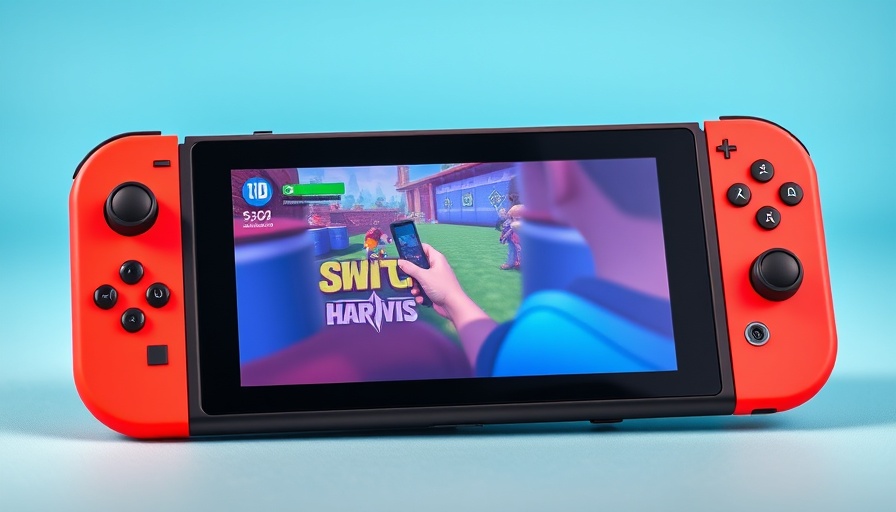
The Evolution of Nintendo Switch: What You Need to Know
The gaming landscape has shifted dramatically since the original Nintendo Switch was released more than eight years ago. With the anticipation around the launch of the Nintendo Switch 2 set for June 5, 2025, it's crucial to understand how the specs of this upcoming device stack up against its predecessors. Digital nomads, who thrive on efficiency and productivity, may find the technological advancements particularly appealing, especially during their travels.
Comparative Specs: A Look at Dimensions and Designs
At first glance, the physical dimensions of the Switch family reveal significant advancements. The Switch 2, measuring 4.5 inches tall, 10.7 inches wide, and 0.55 inches thick, is the largest entry into the lineup. The weight is also noteworthy: it tips the scales at 0.88 lbs without Joy-Cons and 1.18 lbs with them attached. Comparatively, the original Switch measures 4 inches by 9.4 inches and weighs slightly less, making it easier to handle for longer gaming sessions.
The Switch OLED sits between these two, while the Switch Lite is designed for portability, weighing only 0.61 lbs. For digital nomads, understanding these weight and size differences is essential when considering which device might complement their on-the-go lifestyle.
Display Innovations: Is Bigger Really Better?
What truly sets the Switch 2 apart is its display: a massive 7.9 inches with a resolution of 1920 x 1080, supporting HDR10 and a variable refresh rate (VRR) of up to 120Hz. This advancement marks a significant leap in visual fidelity and smoothness. In contrast, the original Switch’s 6.2-inch display offers just a 720p resolution without HDR support, while the OLED version provides vibrant colors but a smaller screen size.
For those constantly moving, high-resolution graphics can enhance the gaming experience, but it’s worth noting that increased screen size also means a larger device to carry. Therefore, evaluating how much you prioritize display quality versus portability is pivotal.
Video Output and Docking Features
As gaming enthusiasts know, the way a console connects to a display can significantly affect user experience. The upcoming Switch 2 is likely exploring enhanced video output capabilities beyond the baseline, which is important for those engaging in multiplayer gaming or streaming. With properties like improved connection options, gamers can enjoy seamless gameplay on bigger screens, making it a valuable asset whether you’re casually gaming in a café or at a more stable workspace.
Impact on Productivity: Choosing the Right Device
The decision between devices often comes down to what suits an individual's lifestyle best. For digital nomads, the Switch Lite might be the ideal solution for casual gaming during travels, given its lightweight body. However, for those who prefer a more immersive gaming experience at home or when stationary, the Switch 2 is likely the better choice. The improved display and specs signal a commitment to evolving gameplay that could enhance one's downtime, allowing users to recharge and become more productive in their workspaces.
Final Thoughts: Investing in the Future of Gaming
As we prepare for the arrival of the Switch 2, it’s clear that Nintendo has put considerable thought into how gamers consume content. The upgraded specifications signify that it's not just about playing games; it's about how these devices fit into our lives, maximizing their potential in today’s fast-paced world. With its richer features, the Switch 2 could aid not just in gaming, but in taking a well-deserved break when you need to renew your focus on work.
Before making your next purchase, weigh your gaming habits against the device specifications. Will the enhanced productivity from the larger display outweigh the extra weight in your backpack? What does your gaming style demand? Reflect on these questions, and you'll be well-prepared to select the right Nintendo device for a more productive and enjoyable gaming experience.
 Add Row
Add Row  Add
Add 




Write A Comment